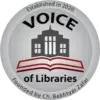Thesaurusتھیسورس
A thesaurus is a reference book that lists words and their synonyms (words with similar meanings) and antonyms (words with opposite meanings). Thesauri are often used to help writers expand their vocabulary and find alternative words to use in their writing. They can also be useful for identifying the precise meaning of a word or for finding a word that expresses a specific concept or idea. Many thesauri also include example sentences or phrases to illustrate the use of the words listed. Thesauri may be published as physical books or as online resources and may be specific to a particular language or field of study.
There are many different types of thesauri that may be used, and the specific type of thesaurus used may depend on the needs and preferences of the user. Some common types of thesauri include:
- Synonym thesauri: These thesauri list words and their synonyms, and may be organized alphabetically or by topic.
- Antonym thesauri: These thesauri list words and their antonyms, and may be organized alphabetically or by topic.
- Bilingual thesauri: These thesauri list words and their translations in another language, and may be organized alphabetically or by topic.
- Subject-specific thesauri: These thesauri are focused on a particular field or discipline, and list words and their synonyms or related terms within that field.
- Online thesauri: These thesauri are available online and may be accessed through a web browser. Some online thesauri also include features such as search functions, example sentences, and audio pronunciations.
- Print thesauri: These thesauri are published as physical books and may be used in a traditional, print-based format.
The specific type of thesaurus used may depend on the language and field of study
